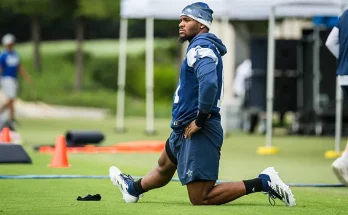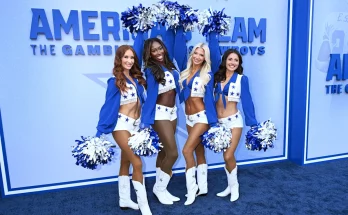For weeks, the buzz surrounding Duke basketball’s offseason had been dominated by an intriguing transfer commitment that had Blue Devils fans excited about what could be coming to Cameron Indoor Stadium next season. A veteran player with an NBA-ready frame and high-level production at his previous stop, his pledge to Duke was viewed as a major win for Jon Scheyer and his staff. But now, the momentum may be shifting in a different direction entirely—and not in Duke’s favor. According to sources close to the situation and at least one NBA Draft expert, the talented transfer may never suit up for the Blue Devils after all, with a jump straight to the professional ranks now considered a strong possibility.
The player in question, whose name quickly rose to the top of mock draft boards in recent months thanks to a strong finish to the 2024-25 college basketball season, had initially entered the transfer portal with the intention of leveraging his final year of college eligibility into a shot at playing for a national championship contender. That plan appeared to come to fruition when he committed to Duke, a program known for grooming high-level talent and preparing players for the NBA. However, as draft workouts near and agents continue to evaluate his market value, the equation has changed.
This shift was first hinted at by a trusted NBA insider earlier this week, who suggested that the player’s representatives are now “leaning heavily toward the NBA route” and are exploring opportunities in both the late first and early second rounds of the 2025 NBA Draft. That sentiment was reinforced by a prominent draft analyst who confirmed that the player had recently received an invitation to the NBA Draft Combine—a clear indicator that league executives view him as a legitimate pro prospect, not just a developmental project.
The ramifications of this potential pivot are wide-ranging for both the player and Duke. For the Blue Devils, it creates an unexpected hole in a roster that had appeared to be among the deepest and most talented in the nation heading into the summer. While Duke’s recruiting class remains elite—featuring returning stars and promising freshmen—the loss of a veteran presence with proven scoring ability, physical toughness, and big-game experience would undeniably be a blow to the team’s aspirations of cutting down the nets next April.
For the player himself, the decision reflects the calculated risk that top-tier college athletes must navigate in the NIL era. With name, image, and likeness money now playing a major role in retaining players at the college level, many prospects are weighing the guaranteed development and exposure that come with another season in school against the long-term upside of beginning their professional careers as soon as possible. And in this case, sources say, the player’s team is increasingly convinced that his draft stock may never be higher than it is right now.
“There’s a sense of momentum around him,” one NBA scout said anonymously. “He’s peaking at the right time. Strong workouts, good film, high motor, and he’s viewed as someone who can come in and contribute on a rookie contract, especially if he lands in the right system.”
Part of the intrigue lies in the player’s unusual path to this point. A late bloomer by basketball standards, he didn’t garner significant national attention until his junior season in college, when he took a leap in efficiency, leadership, and overall productivity. That breakout year made him one of the most coveted names in the transfer portal, with bluebloods and Final Four hopefuls all vying for his commitment. But his decision to commit to Duke felt like the perfect match: a historic program needing experienced talent to balance out its young stars, and a player seeking to sharpen his pro readiness on the sport’s biggest college stage.
But now, with NBA scouts showing increasing interest, private workouts on the schedule, and real financial opportunities at the next level, the dream of suiting up in a Duke uniform may be slipping away. His camp reportedly believes that entering the NBA now offers a clearer path to long-term development—particularly given the influx of two-way contracts, G League affiliate growth, and the ability to immediately begin building a brand on the professional circuit.
There is also a sense that the opportunity cost of returning to school, even at a powerhouse like Duke, might outweigh the benefits. Despite the resources and visibility that come with being a Blue Devil, some within his circle believe the player has already proved everything he needs to prove at the college level. “He’s ready,” said one trainer who has worked with the player over the past three summers. “Mentally, physically, he’s already in the right place. If you can get guaranteed money and a development plan from an NBA team, it’s hard to walk away from that.”
Duke, for its part, has continued to prepare as if the player will be part of next season’s roster, but privately, the coaching staff is said to be exploring contingency plans. The Blue Devils have been active in the portal themselves and may revisit other frontcourt or backcourt targets depending on where the dominoes fall. While no official decision has been made by the player, multiple insiders believe an announcement could come soon—possibly before the NBA Combine begins.
What makes this development particularly compelling is how quickly the situation has evolved. Just a month ago, the transfer was being hyped as one of the biggest additions of the offseason—a cornerstone piece for a Duke team that is aiming to return to the Final Four and contend for the national title. Now, that cornerstone could be removed before the first practice.
It’s also a reminder of how fluid the landscape has become in college basketball. Between NIL, the transfer portal, and early entry into the draft, nothing is guaranteed—not even a verbal commitment from a highly sought-after player. Coaches now find themselves juggling multiple roster possibilities simultaneously, never certain which direction a player might go until the ink is dry (if then).
Still, Duke fans shouldn’t panic just yet. The program is still loaded with talent and has a track record of adjusting to surprises. Scheyer has shown a willingness to adapt and develop younger players quickly, and the Blue Devils’ freshman class features multiple McDonald’s All-Americans ready to take on bigger roles. Plus, should the player ultimately opt to enter the draft, it could free up minutes and opportunities for others to shine.
That said, losing a projected starter with All-Conference-level talent just weeks after securing his commitment would sting, particularly when it comes at a time when expectations for next year’s team are sky-high. Duke was already being penciled in as a preseason top-three team by most analysts, and the veteran’s experience was expected to provide invaluable stability alongside the younger stars.
The larger takeaway here may be that college basketball, as we once knew it, continues to evolve. Decisions that used to be predictable—returning for a senior year, honoring a commitment, waiting for “the right time” to go pro—are now more strategic and data-driven than ever. Players and their advisors are examining every variable, from long-term earning potential to short-term risk, and in this case, the scales appear to be tipping toward the NBA.
Whether or not that proves to be the right call remains to be seen. The player could thrive in the pro ranks or find himself bouncing between rosters and development leagues. Conversely, he could have elevated his stock even further by playing a year at Duke and showcasing his skills on a national stage. But as of now, the decision seems to be trending toward taking that leap—and for better or worse, it’s one that both he and Duke will have to live with.
As the NBA Draft approaches and workouts intensify, all eyes will be on this player and whether he ultimately follows through with his Duke commitment or decides to turn pro. Either way, his journey highlights the uncertainty of today’s college basketball environment—and the increasingly narrow gap between elite amateur status and the professional dream.



